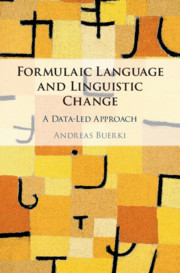Book contents
- Frontmatter
- Dedication
- Contents
- List of Figures
- List of Tables
- Preface
- Abbreviations
- Introduction
- 1 Formulaic Language
- 2 Cultural Context and Diachrony
- 3 The Data, the Community and a Data-Led Identification of MWEs
- 4 MWEs in Written German
- 5 Culture As Motivator of Change
- 6 Cultural Motivation in Context
- Conclusions
- Appendix A Filter Entries
- Appendix B Rater Guidelines on Semantic Unity
- References
- Index
- References
References
Published online by Cambridge University Press: 06 April 2020
- Frontmatter
- Dedication
- Contents
- List of Figures
- List of Tables
- Preface
- Abbreviations
- Introduction
- 1 Formulaic Language
- 2 Cultural Context and Diachrony
- 3 The Data, the Community and a Data-Led Identification of MWEs
- 4 MWEs in Written German
- 5 Culture As Motivator of Change
- 6 Cultural Motivation in Context
- Conclusions
- Appendix A Filter Entries
- Appendix B Rater Guidelines on Semantic Unity
- References
- Index
- References
Summary

- Type
- Chapter
- Information
- Formulaic Language and Linguistic ChangeA Data-Led Approach, pp. 221 - 246Publisher: Cambridge University PressPrint publication year: 2020

